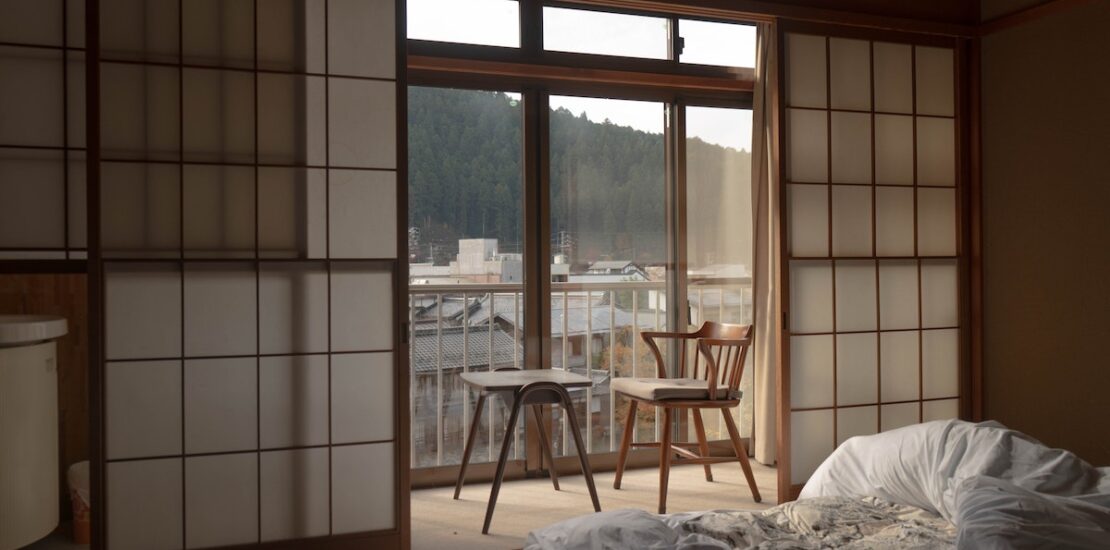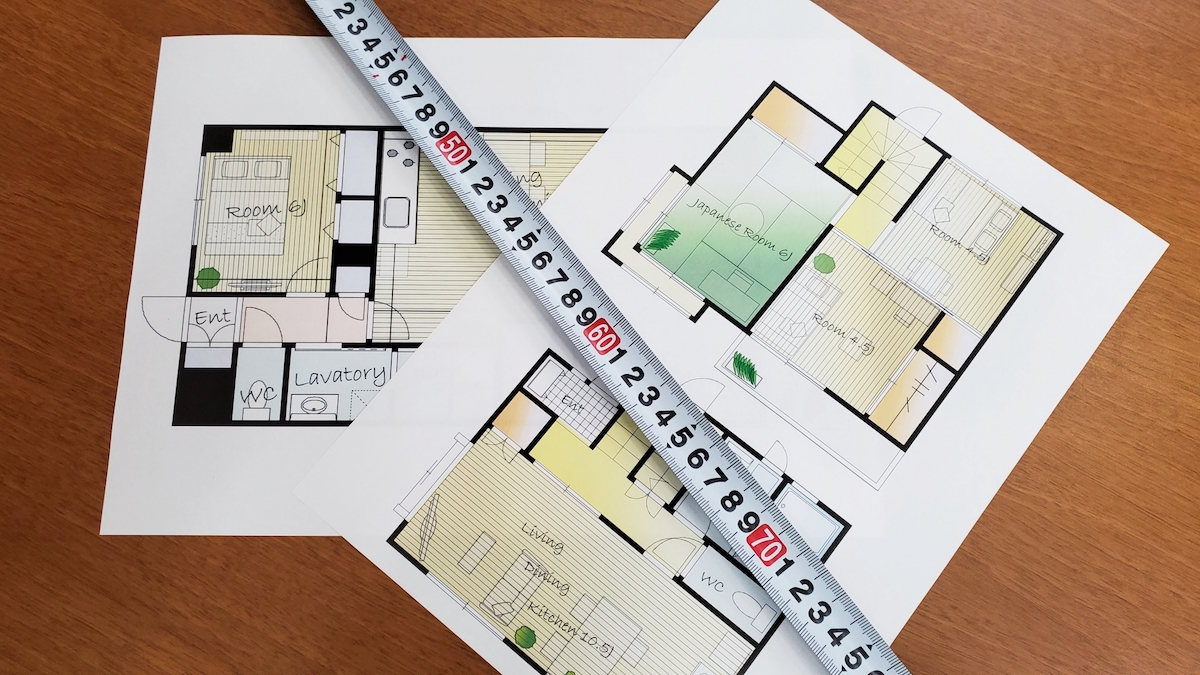1K, 2LDK… what do the terms on a Japanese apartment layout mean? Read for a guide on what you need to know about searching and finding the place of your dreams in Japan!

Dreaming of living in a high-rise in Tokyo? How about in a quiet corner of the Kyoto countryside? If it’s your first time making a big move to Japan or you haven’t searched for a new place in a while, it’s important to be aware of how to search efficiently for your dream home. Luckily, most real estate listings include a layout of the place that makes it easier to imagine your new life.
However, you’ll want to first familiarize yourself with standard Japanese layout terms, used for all apartments, condominiums, and houses throughout the country. From abbreviations like 1K and 2LDK, to area measurements, to locating your closet space, there are quite a few important things to know when looking at the layout of a Japanese apartment.
1. The Difference Between Studios, 1K, and 2LDK in Japan
Japanese apartment and house layouts are shown with numbers followed by L, D, K, and/or S. Please note that these abbreviations have nothing to do with the size of the apartment.
The number stands for the amount of bedrooms (or study room, or living room–the usage is up to you, of course). The L stands for living, D for dining, K for kitchen, and S for service room (usually used for storage). Below is a list of some layouts you will find in Japan.
| Layout | Rooms | Characteristics |
|---|---|---|
| ワンルーム or 1R | One bedroom that includes kitchen space, with a separate bathroom | A studio good for those living alone |
| 1K | One bedroom with a separated kitchen and bathroom | Separate kitchen from the bedroom; good for those living alone |
| 1LDK | One bedroom, one room with a kitchen and living/dining space, separate bathroom | The living/kitchen/dining room is typically spacious; good for living alone, also popular with couples |
| 2DK | Two bedrooms, one room with kitchen and dining space, separate bathroom | Two separate bedrooms and a space for the kitchen/dining; good for couples |
| 2LDK | Two bedrooms, one room with a kitchen and living/dining space, separate bathroom | With an additional spacious living/kitchen space, this layout can work for a family of three |
| 3SLDK | Three bedrooms, one room with a kitchen and living/dining space, service room, separate bathroom | A typical family dwelling layout; one bedroom is typically Japanese-style with tatami |

2. How Japanese Apartments are Measured
Japan is on the metric system, so apartments, condos, and homes are typically measured by square meters (平米). The average size of a Japanese apartment varies by location, price, and when it was built, but you can expect a 1K or 1R to be around 20 to 30 square meters–layouts like 1LDK and beyond that are usually larger than 30 square meters. In Tokyo and other major cities, please note that rooms will be a bit smaller than what you will find in rural areas.
While the overall area of the dwelling is measured in square meters, individual rooms use a Japanese measurement, 帖, or jou. The jou is the size of one tatami mat, which is around 1.62 square meters, but this can vary slightly depending on the region. About six jou will mean that a room is 10 square meters. If you want a spacious, comfortable bedroom in Japan, look for a room that is four jou or larger.
3. Identifying Tatami, Bathrooms, Closet Space, and More
Layouts are sometimes listed with English, but not always, so it’s important to be aware of the abbreviations and Japanese used.
- アパート (apartment) – An apartment that is typically in a building three stories or less
- マンション (mansion) – An apartment that is in a building more than three stories
- シェアハウス (share house) – A shared dwelling where you have a private bedroom space along with a communal space
- 一戸建て (ikko date) – A house that is detached from other buildings
- 玄関 (genkan) – The area you first walk into in a Japanese dwelling
- 洋室 (yoshitsu) – Western-style room with non-tatami flooring
- 和室 (washitsu) – Japanese-style room with tatami
- 収納 (shuno) – Storage area, can be a closet, shoe storage space,etc.
- 押入 (oshire), CL – A closet
- 廊下 (roka) – A hallway
- W.C. – The restroom where the toilet is (often separate from the bath)
- 浴室 (yokushitsu) – The bath area (often separate from the toilet)
- 洗面所 (senmenjo) – The bathroom area with a sink and mirror
- ユニットバス (unit bath) – A bathroom where the toilet, sink, and bath are all-in-one
- ベランダ (veranda) – The veranda
- バルコニー (balcony) – The balcony
Please be aware that terms used vary by the listing, but the ones listed above are common and will cover what is used by most real estate and renting services.
Find Your Ideal Apartment in Japan!
When it comes to searching for your next place to move, there are a lot of uncertainties, no matter where you are, but the unique terms and measurements used in Japan can provide even more obstacles for beginners! However, once you are aware of the terminology, it becomes that much easier to find the place of your dreams, whether you’re looking in the heart of Shibuya, Tokyo, or wanting something quiet in the countryside.
Related Articles
Warning: Undefined array key "sfsi_threadsIcon_order" in /home/veremosglobal/tokyoroomfinder.com/public_html/blog/wp-content/plugins/ultimate-social-media-icons/libs/controllers/sfsi_frontpopUp.php on line 165
Warning: Undefined array key "sfsi_blueskyIcon_order" in /home/veremosglobal/tokyoroomfinder.com/public_html/blog/wp-content/plugins/ultimate-social-media-icons/libs/controllers/sfsi_frontpopUp.php on line 170
Warning: Undefined array key "sfsi_bluesky_display" in /home/veremosglobal/tokyoroomfinder.com/public_html/blog/wp-content/plugins/ultimate-social-media-icons/libs/controllers/sfsi_frontpopUp.php on line 266



